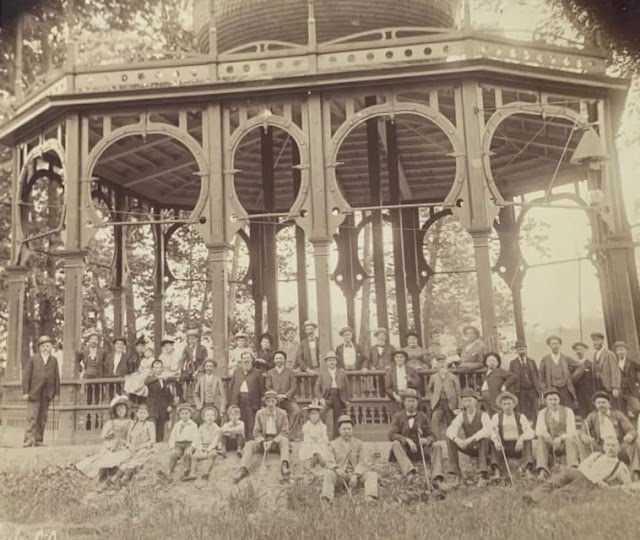This wasn't a surprise discovery. More of an “oh, hey, it's been a while.”
As in more than 100 years type of a while.
We always knew that the remnants from the old Neptune Spring — one of the four mineral springs on the West Baden Springs Hotel property where guests would "take the waters" in the early 1900s — were lurking beneath, and could possibly be unearthed with a little digging. Well, a few weeks ago we went digging and unearthed some more history.
An aerial view of the old Neptune Spring before the water and mud were removed, and (below) part of the network of walking paths that were covered in soil and grass for several decades.
It started as an effort to move some dirt for the Bowling & Billiard Pavilion, a historic outbuilding in the West Baden Springs Hotel Gardens that is in the process of being renovated. Just to the east of the gardens is what looks like a forgotten land. Nothing but grassy growth with the covering of towering trees overhead. Digging here for dirt revealed a network of concrete walking paths. Those paths led to an area of standing water. Nothing remarkable about it. Except from historical photos, we knew what was likely beneath the surface.
So we kept digging….
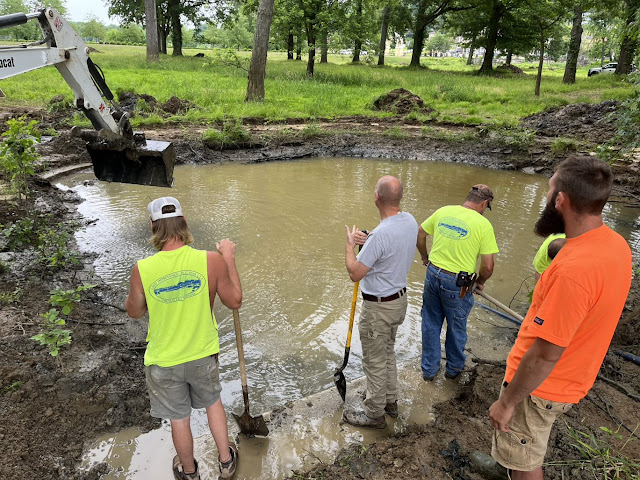
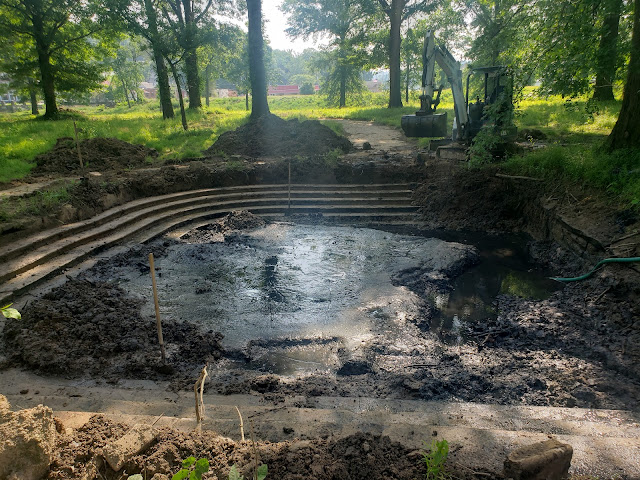
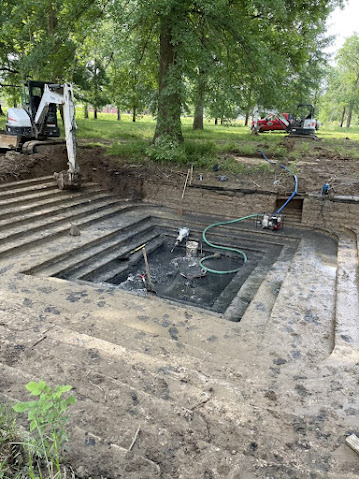
Once the water was pumped out and layers of mud and sludge were removed, a remarkable piece of the hotel's past reappeared right before our eyes. These are the “guts” of the Neptune Spring, or Spring No. 5 as it was also known back in the day. (West Baden used a clever marketing ruse — their four springs were numbered 1, 3, 5 and 7 to give the impression they outranked French Lick Springs Hotel, which had three mineral water springs.) The steps of this basin used to be surrounded by an intricate wooden structure topped with an “onion” shaped dome.
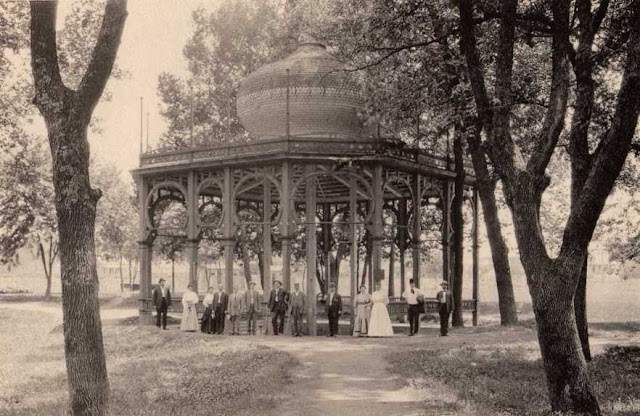
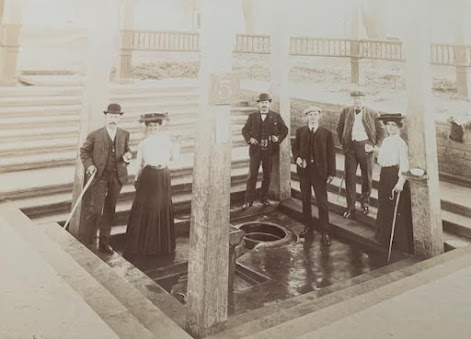
Neptune’s lifespan was short. It was built in circa 1892 and removed in the late 1910s, likely falling into disrepair because of its fragile wood construction and exposure to frequent floods. But while West Baden’s other nearby springs were all capped, it’s been thought that Neptune could possibly be the one and only spring that’s still active. Indeed, when we cleaned it up and got to the bottom of it, the water level started to creep up and the spring appears to be flowing.
Our plan is to revitalize the walking paths to the spring, and continue the cleanup of the actual spring area. So in time, this area will hopefully be open to explore. This little area off the beaten path is full of unique history.
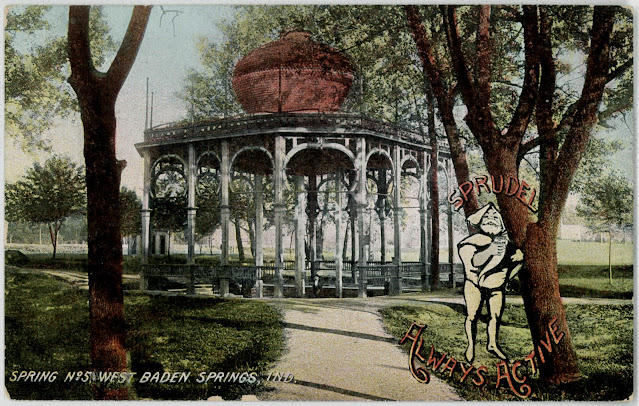
It’s mind-bending to think how the descending steps on the sides of this spring basin were made from cut sandstone — would have been quite a chore in the late 1800s. Some of the massive cottonwood and oak trees providing shade here are north of a century old. And those concrete walking paths are impressive in their own right. Most of them are still in decent shape, broken up a bit in cobblestone style of sorts, after being covered by 6-8 inches of soil and grass for several decades.
History certainly permeates every inch of this resort, even those forgotten, out-of-the-way little corners.
